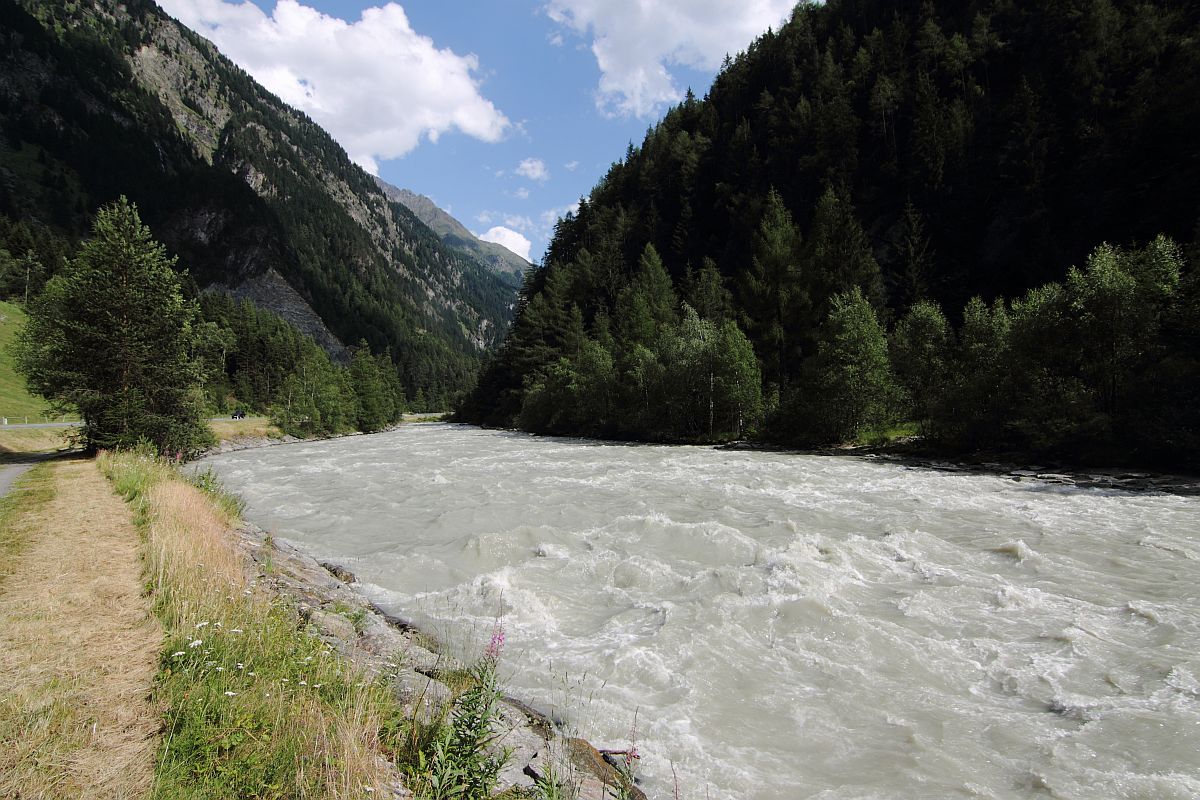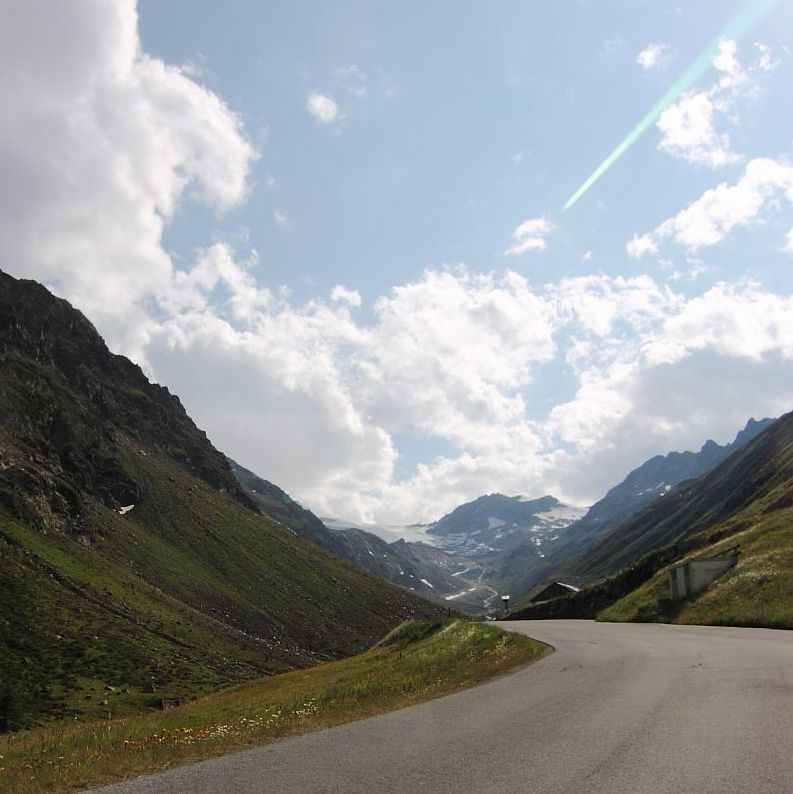The trip often leads directly alongside the Oetz river, until ...
On hot summer days the poweful river is amply filled by the glacier melt
... climbing up the steep glacier road
From the skiing resort Soelden it's a climb of 1400 meters upwards

The trip often leads directly alongside the Oetz river, until ...On hot summer days the poweful river is amply filled by the glacier melt
|
... climbing up the steep glacier roadFrom the skiing resort Soelden it's a climb of 1400 meters upwards
|
At Rettenbachferner glacier skiing area - a tunnel leads further to ...
|
... the parking site of Tiefenbach glacier (alt. 2800 m)
|
Observing site at about alt. 2830 m: The cloud holes gave hope, ...The 10-inch is ready; to its left Ramolkogel (alt. 3550 m), in the far right Similaun (alt. 3606 m)
|
... but new clouds were coming in from the NorthView back to the skiing area.
|
On Saturday noon most forecasts had predicted a clear night from about 23:00 CEST on, but things developed not as predicted: Until about 2:30 CEST thick clouds were
continuously rolling in from the North, only interrupted by some wandering cloud holes. Initially I was quite active - the compact 10-ich f/4.5 Dob is quickly movable -
and picked up some highlights like M13, M27 or M71 in the holes; but the continuous supply of clouds eventually reduced my ambitions considerably. In between I
fell asleep for maybe one hour in the car, but was awake before 2:00 CEST again.
For several hours there were only some holes, ...
|
2:55 CEST: ... but eventually it cleared up
|
From about 2:30 CEST on the cloud holes got bigger and better, and all of a sudden it mostly cleared up - with a sky of high alpine quality.
I did not look for the limiting magnitude, but it was an excellent sky now. That inspired me, and brought back my energies; I then observed
some interesting planetaries in Cygnus with 125x and 190x. The dropshaped NGC 7008 is quite unmistakable, with curious details, and was
good already without filter. NGC 6894 gave a hint of the annulus with 190x already without filter, and with an OIII-Filter it was really obvious.
And Abell 78 could be discerned as a disk with an OIII filter and averted vision.
The seeing was quite good, what was seen when observing the neighboring doubles Struve 3057 and 3062. That's the brighter pair well a degree
away from Beta Cas, in the direction of the very rich open cluster NGC 7789. Both are difficult to split in a different way: The components of
Struve 3057 are more loose (3.7"), but have a much higher difference in magnitude (mag 6,6 to 9,3). Whereas Struve 3062 is much closer (1.5"),
but the magnitudes are not as far apart (mag 6,4 and 7,2). I could well split both with 190x, with a sharp image in the eyepiece. And before
the moon began to disturb, I switched to the open cluster M11 - always magnificent - and M17 and M16; the central "v" of the "Star Queen"
(or "pillars of creation" ) was easily seen with 125x and an OIII filter.
3:37 CEST: The moon has risen
|
Some light in the North from the parking site
|
In the morning |
On the descent a look back at Rettenbach glacier
|
Down in the valley: A still shadowy Soelden (alt. 1360 m) in the morningIn the background left the Noerderkogel (alt. 3163 m)
|
A wild segment of the Oetz river ("Achstürze")The river loses 100 meters in altitude along one kilometer here
|
On alt. 2840: Mountain buttercup ...
|
... and alpine daisy
|